STEP 6. Take the higher of the two G's and tune it with the C below, using the same method.
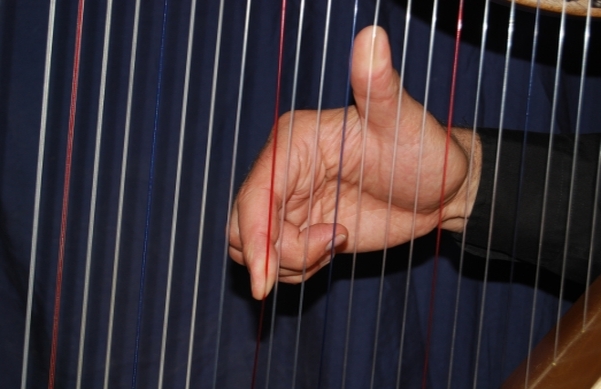
STEP 7. Now tune the C an octave above that and check it with the G below. (No picture)
STEP 8. Now go down a 5th to the blue F string and tune it.
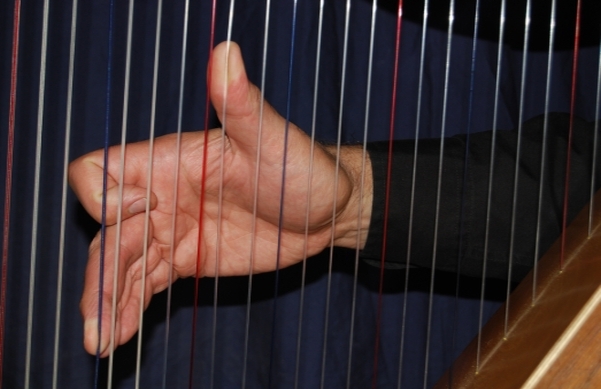
Check it with the C above and below. (No picture) Now you have another check (an added bonus): you have completed enough strings to be able to check your first major third. Notice now that you've tuned the F, you can compare it to the first A that you tuned.
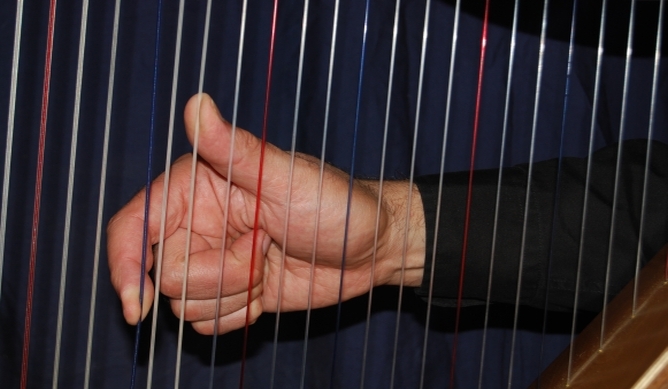
As I mentioned before, a major third should be noticeably out-of-tune. You'll really hear the beats, and if you don't there's something wrong (not with you; it probably means that the F
is too high, and you've created a pure major 3rd). A major third should never be in tune, for
if it is, other intervals will be badly out of tune. However, usually you'll find that if you've made
an error, that F will be too flat, and the third will be too much out of tune. Some tuners like to count seven beats per second when tuning a major third, try that, or also note: you also now have the notes of an F major chord.
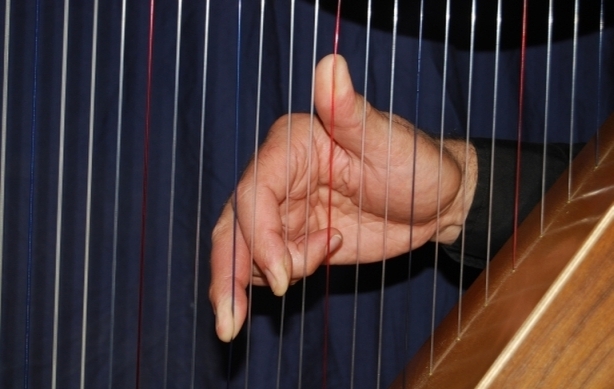
Play that chord. Do you like the sound of it? If not, go back and check your work. Hopefully you will now see that this systems has so many checks in it that it's very easy to find your mistakes before you get too far. If there's a problem with the F and the A, you really need to start all over and try again. Were your 5ths too "perfect", were your octaves really in tune? Harp strings can play tricks on you, especially as your ear becomes fatigued. If you want to keep the C tuning, go on to Step 9, or if you are interested in tuning your harp to Eb, Go to Eb tuning.
STEP 9. Up to now we've used the same method I use for tuning a piano, and we almost have two harp octaves in tune. But we need to depart from the piano version here, because we're tuning only diatonic intervals, and the next 5th we come across is not perfect (F to B). Therefore you need to go back to the A string you tuned first, and go up a perfect 5th to E.
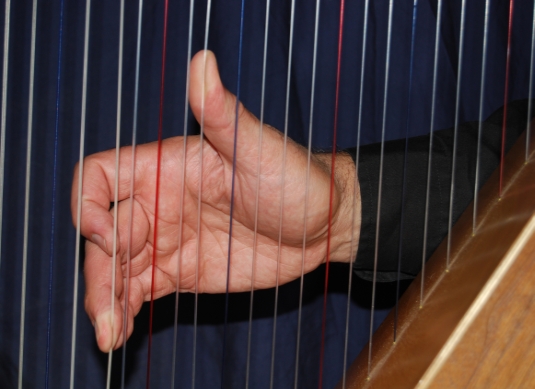
Tuning up a 5th is harder to execute, but you have no choice here. Find the spot where you think the A and E are in tune, and the flatten the E just a little. Now this may be difficult, but you have several checks here. Compare the E with the C you tuned earlier.
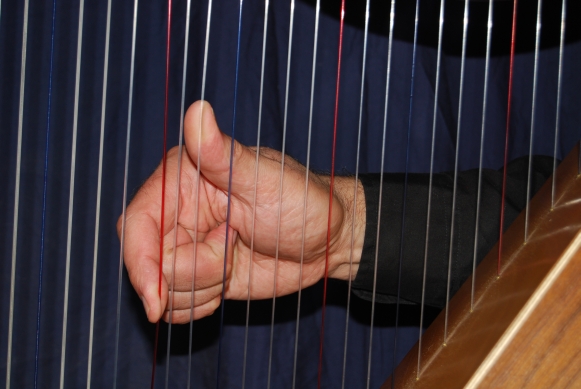
You have a major third to check. Is it just pungent enough? Play the C major chord here? Do you like it? If all of this checks out alright, then tune the E below the A (using the same check we started with— the fourth and fifth check).
STEP 10. Congratulations, you're down to the last string of the scale, the B. Tune it with the two E's you just tuned, starting with the lower one. Then tune the B an octave below that, and check it with the E you have already tuned.
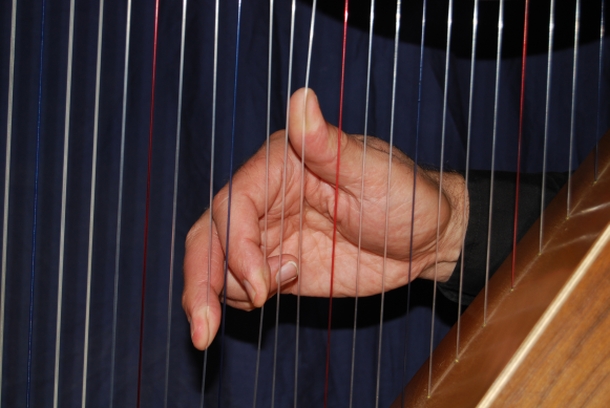
Check the B's with the G's below them (major third). Play an E minor chord, a G major chord. All of these checks will be helpful.
If something is wrong with one chord, check each note with another chord. You'll quickly find the culprit this way, without having to do the whole system over again.
STEP 11. You've now tuned two octaves and set a temperament, and all that is left is to tune the remaining notes in octaves from the strings you've already tuned. Here's a good way to do this:
Please email me and tell me how things are going. I wish you well in your Celtic harp playing, as well as your tuning.